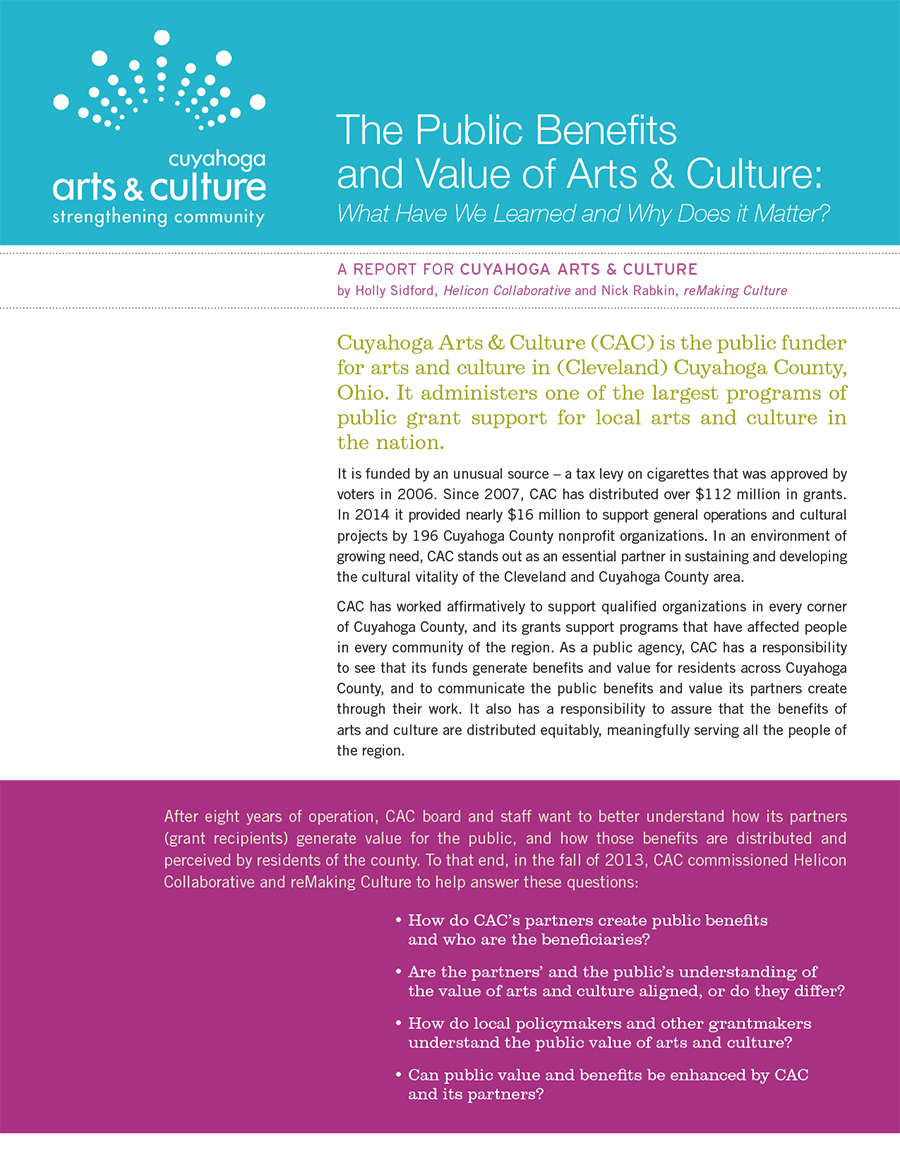The Public Benefits and Value of Arts & Culture
What Have We Learned and Why Does It Matter?
Holly Sidford and Nick Rabkin. 2014, 10 pages, Cuyahoga Arts and Culture.
Download:
![]() The Public Benefits and Value of Arts & Culture (299 Kb)
The Public Benefits and Value of Arts & Culture (299 Kb)
Cuyahoga Arts & Culture commissioned the report The Public Benefits and Value of Arts & Culture: What Have We Learned and Why Does it Matter? by Holly Sidford of Helicon Collaborative and Nick Rabkin of reMaking Culture to better understand how its cultural partners (grant recipients) generate value for the public, and how those benefits are distributed and perceived by residents of the county.
At the 2014 GIA Conference, the session on the report drew more than forty-five animated participants — representing public and private sector funders from across the country — into a lively discussion about what “public value” means, what strategies they are using to try to expand the benefits and value of the arts to the broad public, and how advocates are building public appreciation for and engagement with arts and culture.
Our sector’s ideas about public value have evolved in the ten years since RAND’s landmark publication The Gifts of the Muse. Today we recognize that “public value” — what the public values and how it benefits — grows from individuals’ private experiences as audiences, as learners, and as makers of art.
Unless people have active, positive experiences with the arts, they are unlikely to understand their value. We also better understand that there are many routes into the arts, including through important community-based entities and programs, and that not everyone feels welcomed into our mainstream institutions.
Further, we now see that “public value” is created by the collective action of members of the cultural sector. Cultural groups must work together intentionally if they are to meaningfully grow the value that all community residents ascribe to the arts.
For arts funders, these observations underscore the importance of ensuring that multiple forms of cultural expression are recognized and accessible, that cultural institutions have meaningful relationships with diverse constituents, and that the cultural sector as a whole works together to serve the broadest possible cross section of community residents.
Cuyahoga Arts & Culture, a public arts and culture agency based in Cleveland, Ohio, sees enhancing the public value of the arts as core to its mission and crucial to sustaining public financing of the arts in the future. The report’s findings will serve as the groundwork for CAC’s future planning and ongoing efforts to bolster the public value of the arts for the residents of Cuyahoga County, and may benefit other communities seeking to deepen the public value of the arts in the years ahead.

